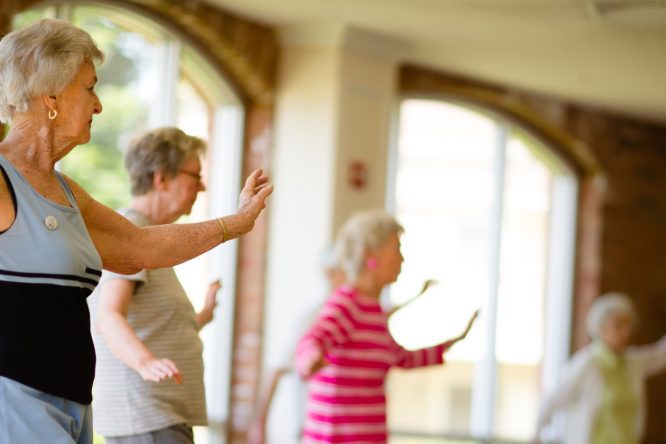At the 2019 LeadingAge Tennessee Conference and EXPO, an entire audience of people sat together quietly, eyes closed, remembering how they felt on the first day of school.
After several minutes, the presenter had them open their eyes and share their feelings. Emotions ranged from fear and excitement to nervousness and anxiety.
Why did presenter Melissa Ward, PT, MS, RAC-CT, Vice President of Clinical and Regulatory Affairs at Functional Pathways, have the audience do this exercise? She wanted to evoke the emotions students and parents feel on the first day of school, which is very similar to the way residents and their loved ones may feel on their first day in a retirement community.
Trying to find your way around an unfamiliar place can be a tremendous adjustment, and the move can be just as stressful for families leaving their loved ones. But there are ways to help the transition go more smoothly, like the techniques described in this recent article in McKnight’s Senior Living. And now, new residents and their families have another powerful resource to draw on: a unique program developed by the Functional Pathways team.
According to Ward, the Transition Concierge Program began as a “what-if” idea about two years ago. “A client community was struggling with having residents successfully age in place,” Ward said. “New residents came in and weren’t engaged in community life. They weren’t taking advantage of everything available on the campus. This issue was leading to increased risk for falls and residents requiring higher levels of care.”
That’s when the Functional Pathways Team, led by Beth Reigart, Clinical Outcomes Specialist, decided to create the new Transition Concierge Program. This collaborative approach brings together a powerful arsenal of tools, including social services, nursing, therapy, activities, wellness, resident programming, resident support groups, resources for the family, on-campus physician services and more. By making the transition smoother, the program helps residents successfully age in place.
How the Transition Concierge Program Works
When the resident moves in, a Navigation Team conducts in-depth standardized assessments. Then, an Interdisciplinary Team creates a plan of individualized support. Every element is geared toward giving the individual input into his or her own life.
Here are a couple of examples: If a resident has breathing problems, he or she may need a plan that addresses limitations in endurance to make it possible to get to the bistro. If a resident has low vision, apartment modifications or a plan to get and read mail may be needed. Every resident adjusts to resident living at a different rate, according to Ward. The program was designed to provide services and support that fit each individual’s unique needs.
More Than Just a Real Estate Transaction
The Functional Pathways team believes that moving into an independent living community should be “more than just a real estate transaction.” It’s fostering a true continuum of care through this innovative service.
New residents may still face those first-day-of-school jitters. Fortunately, this innovative collaboration helps ease the transition so they can find passion and purpose in their new environment.
How is your community helping resident transitions go more smoothly? Let me know at . I’d love to feature your strategies in an upcoming blog post.


